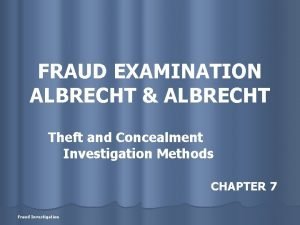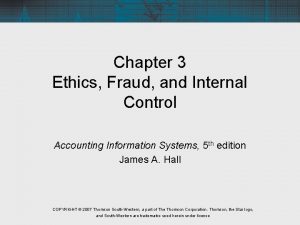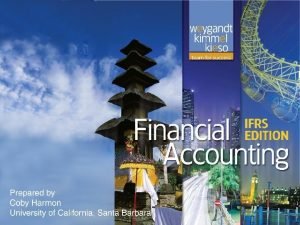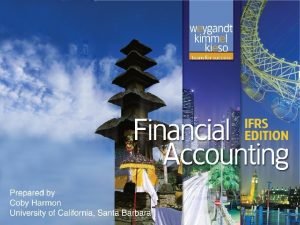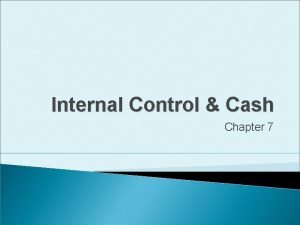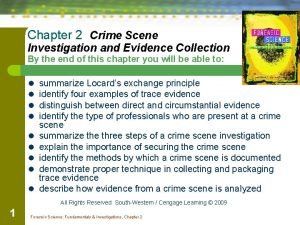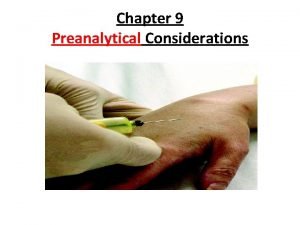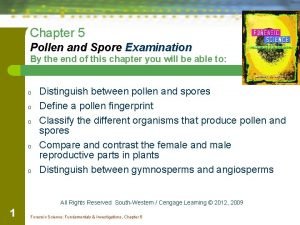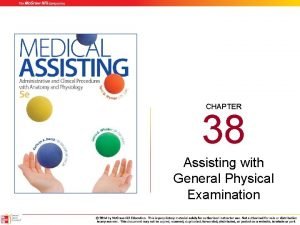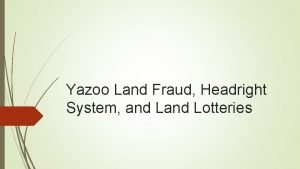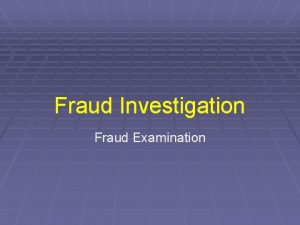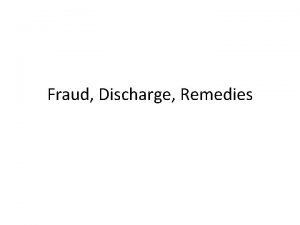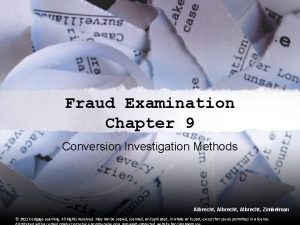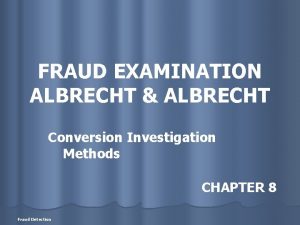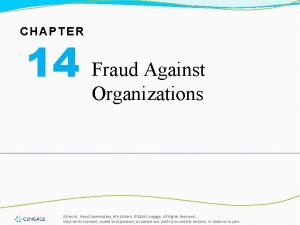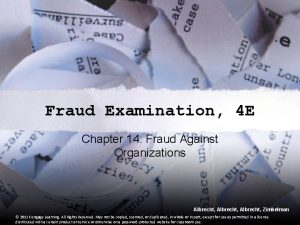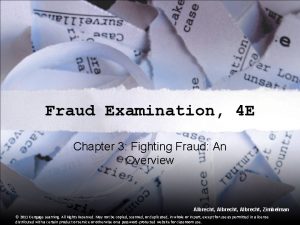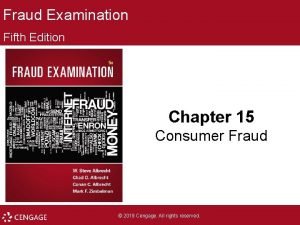Fraud Examination 3 E Chapter 9 Conversion Investigation









![[RM 1]Comp: Right align numbers, align $, and use single and double rules as [RM 1]Comp: Right align numbers, align $, and use single and double rules as](https://slidetodoc.com/presentation_image_h2/db24e557255dc292c3605405bd90244a/image-10.jpg)
- Slides: 10

Fraud Examination, 3 E Chapter 9: Conversion Investigation Methods

Learning Objectives • Explain why finding out how perpetrators convert and spend their stolen funds is important. • Understand how federal, state, and local public records can assist in following the financial “tracks” of suspected perpetrators. • Access information via the Internet to assist in the investigation of a suspected fraud perpetrator. 2

Learning Objectives • Perform net worth calculations on suspected fraud perpetrators and understand how net worth calculations are effective in court and in obtaining confessions. 3

Conversion Searches Performed for two reasons: (1) to determine the extent of embezzlement (2) to gather evidence that can be used in interrogations to obtain a confession 4

Conversion Searches Information can be gleaned from: (1) federal, state, and local agencies and other organizations (2) private sources of information (3) online sources of information (4) using the net worth method of analyzing spending information 5

Conversion Searches Public Records Government Federal State Local 6 Private Sources Utility Records Previous Acquaintances Trash Cover Credit Agencies Financial Institutions Online Databases Subscription Per-search Fee Free Internet Searches Google Alta. Vista Etc.

Private Sources of Information • Utility records (gas, electric, water, garbage, and sewer • Private Acquaintances • “Trashing” • Shredded documents • Original files on computers **Be sure you have the legal rights to gather and use the information 7

Online Databases 8 Examples: • Accurint • Auto. Track. XP • Black Book Online • Choice. Point • EBSCO Publishing • Public. Data • Public Record Finder • SEC’s EDGAR Database • Web Detective

The Net Worth Method Assets – Liabilities = Net Worth – Prior Year’s Net Worth = Net Worth Increase + Living Expenses = Income 9 Income – Funds from Known Sources = Funds from Unknown Sources
![RM 1Comp Right align numbers align and use single and double rules as [RM 1]Comp: Right align numbers, align $, and use single and double rules as](https://slidetodoc.com/presentation_image_h2/db24e557255dc292c3605405bd90244a/image-10.jpg)
[RM 1]Comp: Right align numbers, align $, and use single and double rules as shown. Financial Data for Helen Weeks The Net Worth Method Helen Week’s Example (from Chapter 2) End Year 1 End Year 3 Total assets $206, 000 $212, 000 $246, 000 Total liabilities $100, 000 $ 50, 000 $— Net worth $106, 000 $162, 000 $246, 000 Net worth increase $ 56, 000 $ 84, 000 Plus total expenses 30, 800 32, 800 $ 86, 800 $116, 800 40, 000 42, 000 $ 46, 800 $ 74, 800 Total Income Less known income Income from unknown sources 10 End Year 2
 How do fraud symptoms help in detecting fraud
How do fraud symptoms help in detecting fraud Fraud examination albrecht
Fraud examination albrecht Ethics fraud and internal control
Ethics fraud and internal control Controlsbond
Controlsbond Chapter 7 fraud internal control and cash
Chapter 7 fraud internal control and cash The entry to establish a petty cash fund includes
The entry to establish a petty cash fund includes The seven s's of crime scene investigation
The seven s's of crime scene investigation Basal state blood collection
Basal state blood collection Chapter 5 pollen and spore examination review answers
Chapter 5 pollen and spore examination review answers Chapter 38 assisting with a general physical examination
Chapter 38 assisting with a general physical examination Define headright system
Define headright system

